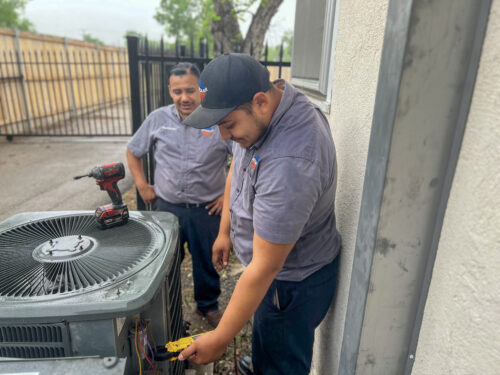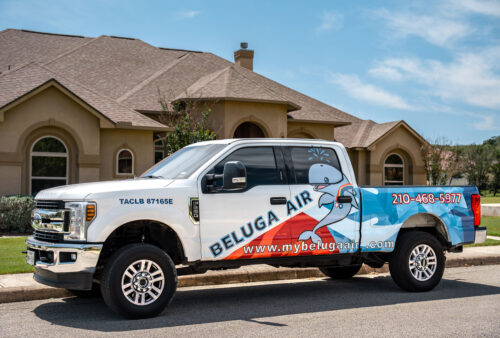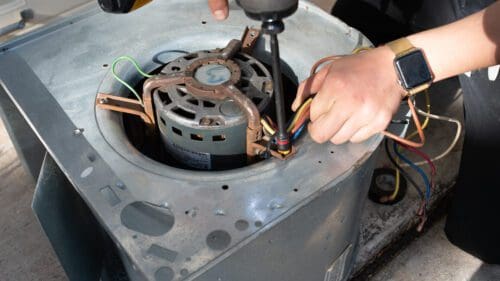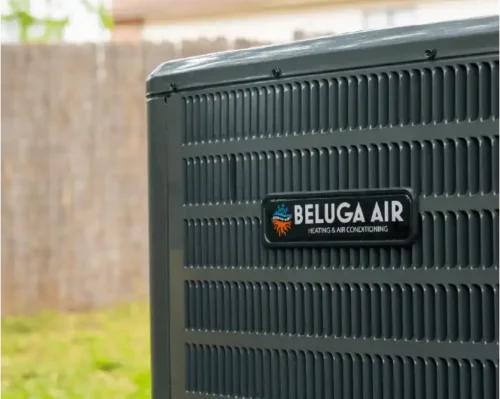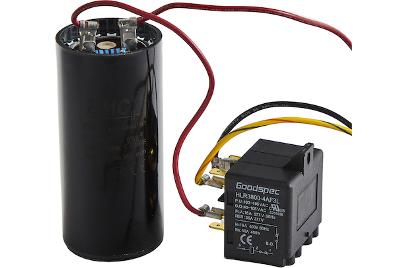Common Indoor Air Pollutants
Did you know that the air inside your home can be more polluted than the air outside? Poor Indoor Air Quality (IAQ) can affect your health and wellbeing, leading to symptoms like allergies, headaches and fatigue. To keep yourself and your family safe from the hazards of indoor air pollution, it’s important to be aware of the most common pollutants in the air and how to address them.
In this article, we’ll take a close look at the most common indoor air pollutants and what you can do to reduce their presence in your home. We’ll explore the role of HVAC systems in improving IAQ, the importance of air filters and HEPA filters, and how IAQ solutions can help improve air quality in your home. So let’s get started!
Mold
is one of the most common indoor air pollutants, and can have a serious impact on Indoor Air Quality. Mold can be found anywhere, but is particularly common in areas of high humidity or any area with a moisture problem. HVAC systems or air conditioning can also lead to mold growth when moisture is trapped in the system. Inhalation of mold spores can cause allergies, sickness, and respiratory problems, such as asthma. It is important to make sure that the humidity level in your home is kept to a minimum to reduce the growth of mold, and that any water or moisture issues are dealt with quickly.
Pet Dander and Saliva
Pet dander and saliva are two common indoor air pollutants that can contribute to diminished indoor air quality. Pet dander is a combination of dried skin flakes, fur and saliva that are released into the air when an animal licks itself or sheds. All animals, large and small, can produce and release pet dander and saliva. In poorly ventilated spaces, the particles can circulate through your HVAC system, spreading to all parts of your home.
These air pollutants can cause various health problems, especially for those with allergies or asthma. Coughing, sneezing and respiratory distress can come from pet dander, as well as reactions from contact with pet saliva. When poor indoor air quality accumulates, it can lead to additional issues such as hay fever, headaches and fatigue, as well as illness like the common cold.
These problems can be avoided or minimised with proper air conditioning and ventilation. Regular maintenance on HVAC systems help to not only keep air clean, but also reduce the amount of allergens and irritants in the air. A good air filter can also help to reduce pet dander and saliva in the atmosphere.
Dust Mites and Pollen
Dust mites and pollen are two of the most common indoor air pollutants. Dust mites are microscopic arachnids that feed on dead skin cells, mold, and other organic particles. They can be found in carpets, upholstered furniture, bedding, curtains and other fabric surfaces. Pollen is a powdery substance released by plants in order to fertilize other plants of the same species. While some people aren’t affected by them, dust mites and pollen can cause a variety of allergic reactions in people who are sensitive to them.
Exposure to dust mites and pollen can cause symptoms such as sneezing, coughing, nasal congestion, itchy eyes and skin rashes. In more severe cases they can lead to asthma attacks or a worsening of existing asthma symptoms. To reduce your exposure to dust mites and pollen indoors, make sure to wash bedding in hot water frequently, vacuum carpets and upholstery regularly, keep windows closed during allergy season and use an air filter that is designed to remove allergens from the air.
Humidity and Ventilation
Humidity and ventilation are two of the most important aspects of indoor air quality. Poor ventilation and excessive humidity can both create unhealthy and hazardous environments.
High Humidity
High humidity creates an environment that is especially conducive to the growth of molds and mildews. Mold spores can travel through the air and cause allergic reactions or respiratory problems for susceptible individuals. The damp environment also encourages the growth of dust mites, which can also cause allergies and other health problems.
Additionally, high humidity can cause other problems such as deteriorating insulation and wood. This can lead to structural damage to the home, further reducing the air quality by allowing dust and other pollutants to enter the air space.
Poor Ventilation
Poor ventilation also has serious consequences. Proper air movement is essential in order to dilute and circulate pollutants in the air. Without suitable air exchange, pollutants accumulate in the air, leading to higher pollution levels.
Solutions
HVAC systems are one of the best ways to prevent pollutant buildup in your home. HVAC systems provide a means of circulating clean, fresh air and dehumidifying the air when necessary. Additionally, filters can be added to the HVAC system to remove pollutants before they enter the air space.
Using air conditioning can also help reduce humidity levels in the home and can help to prevent the growth of molds and dust mites.
UV Lights
The use of UV lights in home HVAC systems is an increasingly popular method to help reduce the amount of indoor air pollutants. Ultraviolet (UV) light is a type of electromagnetic radiation that is invisible to the human eye, but it has powerful disinfecting capabilities in the fight against indoor air pollutants. You can effectively eliminate the growth of organic matter in your home such as mold, mildew and viruses by exposing them to Ultra Violet Light.
Learn More in our article on ULTRA VIOLET LIGHTS and how they can save you money!
Air Scrubbers
Air scrubbing technology is quickly gaining traction in the fight against indoor air pollution. An air scrubber is an air cleaning device that uses a filtration, absorption, or adsorption process to remove pollutants from the air. They are designed to capture airborne particles such as dust, pollen, mold spores, and viruses from the air as it passes through. Commonly used in commercial buildings such as office buildings and hospitals, air scrubbers help improve overall air quality and reduce the amount of pollutants that can be inhaled by both workers and customers.
Finally, regularly cleaning your home is also an important step in maintaining good indoor air quality. Routine cleaning and vacuuming reduces the amount of dust and other allergens in the air, helping to prevent allergies and sickness.
Proper humidity and ventilation levels, coupled with regular HVAC maintenance and cleaning, can help ensure healthy indoor air quality. By taking these steps, you can help protect yourself and your family from the damaging effects of airborne pollutants.
Additional Information available at:
https://www.osha.gov/indoor-air-quality
https://www.epa.gov/indoor-air-quality-iaq
Have Questions?
We’d love to answer your questions and help you in any way.
